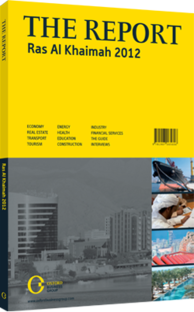Stronger together: A merger deal helps to diversify and expand reserves
Two hydrocarbons firms, RAK Gas and RAK Petroleum, are the main players in Ras Al Khaimah’s energy sector. The former is a state-owned company responsible for ensuring a steady and reliable supply of gas for the emirate, while the latter is a public limited company formed in 2005. The latter is headquartered in Dubai and is not listed on any exchange, with shares traded over the counter instead through a number of UAE-based brokerages.
The two firms cooperate closely, with RAK Petroleum supplying RAK Gas’s treatment facility at Khor Khuwair with gas from the Bukha and West Bukha fields, which it operates in a joint venture with LG International. The Bukha train at the plant has the capacity to process some 60m cu feet of gas per day. In 2010 RAK Petroleum took ownership of the Saleh gas field, which had been considered depleted during the 1990s but which high oil prices and new technology have made viable once again.
MERGER MOVES: In a move to diversify its reserve base – and by extension, that of the emirate – in the summer of 2011 RAK Petroleum initiated merger discussions with DNO International, a Norwegian oil and gas exploration and production (E&P) company, which is traded on the Oslo stock exchange. RAK Petroleum already held a 30% stake in the E&P firm, whose assets lie mostly in the Middle East.
Over three-quarters of shareholders in both of the companies approved the deal in November, and the merger was completed in January 2012, Norwegian law having stipulated a two-month notice period to any creditors. Under the terms of the merger, RAK Petroleum exchanged its oil and gas assets for additional shares in DNO, transforming itself into an investment vehicle rather than an operator.
The valuation of the two firms’ assets, carried out by consultants DeGolyer and MacNaughton, estimated the value of RAK Petroleum’s assets at around $250m and those of DNO at $1.64bn. Approximately 153.42m shares were issued to RAK Petroleum in consideration of its assets, and RAK Petroleum’s share in DNO rose from 30% to 42.8%. RAK Petroleum’s chairman and CEO, Bijan Mossavar-Rahmani, continues in his role, as well as taking up the post of executive chairman of DNO. RAK Petroleum will maintain offices in RAK and Dubai, while DNO will add Muscat and RAK to its existing offices in Oslo, Erbil, Sanaa, Dubai, Tunis and London.
ASSETS: Until the merger, RAK Petroleum’s assets were located in Oman and the UAE. DNO, meanwhile, held assets in the Kurdistan region of Iraq, Yemen and Tunisia, and according to its interim report for 2011, the company’s operating revenue was a record $368.9m, up 65% on the previous year. Net profits were approximately $116.4m in 2011, against a loss of some $50.4m in 2010. The fact that both companies were operating smaller fields in the Middle East and North Africa (MENA) region led their respective boards to think that significant synergies could be found, and following the merger DNO has emerged as a stronger, solely MENA-focused E&P independent, with a wider spread of assets and total reserves of 406.5m barrels of oil equivalent.
MOVING AHEAD: DNO’s former director, Berge Gerdt Larsen, now the chairman of Petrolia, a Norwegian oil services company, objected to the merger on the grounds that RAK Petroleum’s assets, which are mostly offshore, would overburden the merged entity with future decommissioning costs.
However, in October 2011 an Oslo court dismissed a case brought by Petrolia directors, and the merger went ahead. In November, Petrolia proposed DNO repurchase RAK Petroleum’s offshore assets, for a nominal amount, an idea that RAK Petroleum rejected as impossible, since the merger of assets had already been approved by both sets of shareholders. The new merged entity is in the process of completing a dual listing on the London Stock Exchange, in addition to DNO’s listing in Oslo, and looks well placed for further expansion in the years ahead.
You have reached the limit of premium articles you can view for free.
Choose from the options below to purchase print or digital editions of our Reports. You can also purchase a website subscription giving you unlimited access to all of our Reports online for 12 months.
If you have already purchased this Report or have a website subscription, please login to continue.

